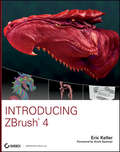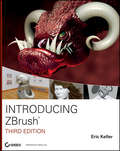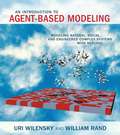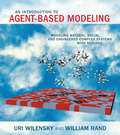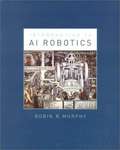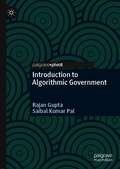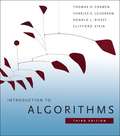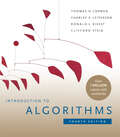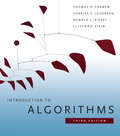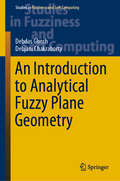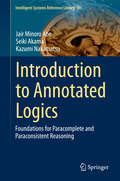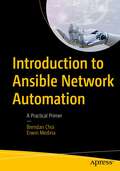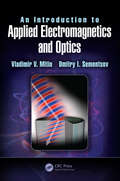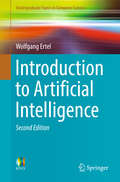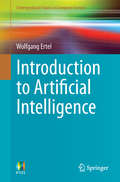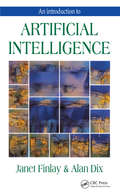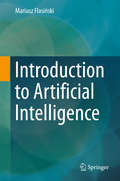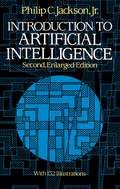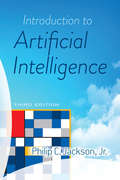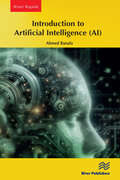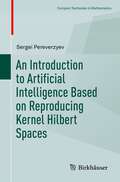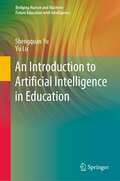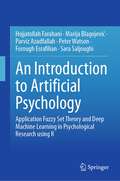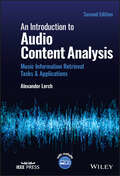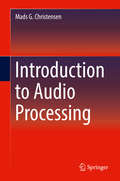- Table View
- List View
Introducing ZBrush
by Eric KellerIf you want to take advantage of one of the hottest CG tools available, Introducing ZBrush is the perfect place to start.Introducing ZBrush helps you jump into this exciting drawing and sculpting software without fear. Learn ZBrush 3.1 basics inside and out and get comfortable sculpting in a digital environment with this relaxed, friendly, and thorough guide. Master these practical techniques and soon you'll be creating realistic, cartoon, and organic models with flair.Introduces you to ZBrush 3.1, the sculpting software that lets you create digital art with a fine-art feel, which you can transfer into Maya or other 3D applicationsCovers painting, meshes, organic sculpting, hard surface sculpting, textures, lighting, rendering, working with other 3D applications, and scriptingWalks you through a series of fun and engaging tutorials where you can start creating your own work, including human, cartoon, and organic modelsLearn to create lush, beautiful digital art with ZBrush and this detailed guide.
Introducing ZBrush 3rd Edition
by Eric KellerLearn ZBrush inside and out with this updated new editionGet totally comfortable sculpting in a digital environment with the latest edition of this bestselling beginner's guide to ZBrush. Fully updated for the newest version of the software, ZBrush 4R3, this book dispels any fears you might have about the difficulty of using ZBrush and soon has you creating realistic, cartoon, and organic models with flair. Learn all the essentials, as you complete fun tutorials on painting, meshes, organic scripting, hard surface sculpting, lighting, rendering, and more.Introduces you to ZBrush, the sculpting software that lets you create digital art with a fine-art feel, which you can transfer into Maya or other 3D applications Covers painting, meshes, organic sculpting, hard surface sculpting, textures, lighting, rendering, working with other 3D applications, and scripting Walks you through a series of fun and engaging tutorials where you can start creating your own work, including human, cartoon, and organic models Fully updated for the newest version of ZBrush, ZBrush 4R3, including full coverage of its robust rendering tools Includes a DVD with helpful video examples and files to help you complete the tutorialsDesign remarkably realistic creatures, people, and objects with ZBrush and the new edition of this top-selling guide.The DVD is not included as part of the e-book file, but is available for download after purchase.
An Introduction to Agent-Based Modeling: Modeling Natural, Social, and Engineered Complex Systems with NetLogo
by Uri Wilensky William RandThe advent of widespread fast computing has enabled us to work on more complex problems and to build and analyze more complex models. This book provides an introduction to one of the primary methodologies for research in this new field of knowledge. Agent-based modeling (ABM) offers a new way of doing science: by conducting computer-based experiments. ABM is applicable to complex systems embedded in natural, social, and engineered contexts, across domains that range from engineering to ecology. An Introduction to Agent-Based Modeling offers a comprehensive description of the core concepts, methods, and applications of ABM. Its hands-on approach -- with hundreds of examples and exercises using NetLogo -- enables readers to begin constructing models immediately, regardless of experience or discipline.The book first describes the nature and rationale of agent-based modeling, then presents the methodology for designing and building ABMs, and finally discusses how to utilize ABMs to answer complex questions. Features in each chapter include step-by-step guides to developing models in the main text; text boxes with additional information and concepts; end-of-chapter explorations; and references and lists of relevant reading. There is also an accompanying website with all the models and code.
An Introduction to Agent-Based Modeling: Modeling Natural, Social, and Engineered Complex Systems with NetLogo
by Uri Wilensky William RandA comprehensive and hands-on introduction to the core concepts, methods, and applications of agent-based modeling, including detailed NetLogo examples. The advent of widespread fast computing has enabled us to work on more complex problems and to build and analyze more complex models. This book provides an introduction to one of the primary methodologies for research in this new field of knowledge. Agent-based modeling (ABM) offers a new way of doing science: by conducting computer-based experiments. ABM is applicable to complex systems embedded in natural, social, and engineered contexts, across domains that range from engineering to ecology. An Introduction to Agent-Based Modeling offers a comprehensive description of the core concepts, methods, and applications of ABM. Its hands-on approach—with hundreds of examples and exercises using NetLogo—enables readers to begin constructing models immediately, regardless of experience or discipline. The book first describes the nature and rationale of agent-based modeling, then presents the methodology for designing and building ABMs, and finally discusses how to utilize ABMs to answer complex questions. Features in each chapter include step-by-step guides to developing models in the main text; text boxes with additional information and concepts; end-of-chapter explorations; and references and lists of relevant reading. There is also an accompanying website with all the models and code.
Introduction to AI Robotics
by Robin R. MurphyThis text covers all the material needed to understand the principles behind the AI approach to robotics and to program an artificially intelligent robot for applications involving sensing, navigation, planning, and uncertainty. Robin Murphy is extremely effective at combining theoretical and practical rigor with a light narrative touch. In the overview, for example, she touches upon anthropomorphic robots from classic films and science fiction stories before delving into the nuts and bolts of organizing intelligence in robots. Following the overview, Murphy contrasts AI and engineering approaches and discusses what she calls the three paradigms of AI robotics: hierarchical, reactive, and hybrid deliberative/reactive. Later chapters explore multiagent scenarios, navigation and path-planning for mobile robots, and the basics of computer vision and range sensing. Each chapter includes objectives, review questions, and exercises. Many chapters contain one or more case studies showing how the concepts were implemented on real robots. Murphy, who is well known for her classroom teaching, conveys the intellectual adventure of mastering complex theoretical and technical material.
Introduction to Algorithmic Government
by Rajan Gupta Saibal Kumar PalThe world is changing at a fast pace, so is the Government and Governance style. Humans are bound to go for Algorithmic strategies rather than manual or electronic ones in different domains. This book introduces the Algorithmic Government or Government by Algorithm, which refers to authorizing machines in the Public Sector for automated decision-making based on Artificial Intelligence, Data Science, and other technologies. It is an emerging concept introduced globally and will be considered revolutionary in the future. The book covers concepts, applications, progress status, and potential use-cases of Algorithmic Government. This book serves as introductory material for the readers from technology, public policy, administration, and management fields.
Introduction to Algorithms
by Thomas H. Cormen Charles E. Leiserson Ronald L. Rivest Clifford SteinSome books on algorithms are rigorous but incomplete; others cover masses of material but lack rigor. Introduction to Algorithms uniquely combines rigor and comprehensiveness. The book covers a broad range of algorithms in depth, yet makes their design and analysis accessible to all levels of readers. Each chapter is relatively self-contained and can be used as a unit of study. The algorithms are described in English and in a pseudocode designed to be readable by anyone who has done a little programming. The explanations have been kept elementary without sacrificing depth of coverage or mathematical rigor.
Introduction to Algorithms, fourth edition
by Thomas H. Cormen Charles E. Leiserson Ronald L. Rivest Clifford SteinA comprehensive update of the leading algorithms text, with new material on matchings in bipartite graphs, online algorithms, machine learning, and other topics.Some books on algorithms are rigorous but incomplete; others cover masses of material but lack rigor. Introduction to Algorithms uniquely combines rigor and comprehensiveness. It covers a broad range of algorithms in depth, yet makes their design and analysis accessible to all levels of readers, with self-contained chapters and algorithms in pseudocode. Since the publication of the first edition, Introduction to Algorithms has become the leading algorithms text in universities worldwide as well as the standard reference for professionals. This fourth edition has been updated throughout. New for the fourth edition • New chapters on matchings in bipartite graphs, online algorithms, and machine learning • New material on topics including solving recurrence equations, hash tables, potential functions, and suffix arrays • 140 new exercises and 22 new problems • Reader feedback–informed improvements to old problems • Clearer, more personal, and gender-neutral writing style • Color added to improve visual presentation • Notes, bibliography, and index updated to reflect developments in the field • Website with new supplementary material
Introduction to Algorithms, third edition (The\mit Press Ser.)
by Thomas H. Cormen Charles E. Leiserson Ronald L. Rivest Clifford SteinThe latest edition of the essential text and professional reference, with substantial new material on such topics as vEB trees, multithreaded algorithms, dynamic programming, and edge-based flow.Some books on algorithms are rigorous but incomplete; others cover masses of material but lack rigor. Introduction to Algorithms uniquely combines rigor and comprehensiveness. The book covers a broad range of algorithms in depth, yet makes their design and analysis accessible to all levels of readers. Each chapter is relatively self-contained and can be used as a unit of study. The algorithms are described in English and in a pseudocode designed to be readable by anyone who has done a little programming. The explanations have been kept elementary without sacrificing depth of coverage or mathematical rigor.The first edition became a widely used text in universities worldwide as well as the standard reference for professionals. The second edition featured new chapters on the role of algorithms, probabilistic analysis and randomized algorithms, and linear programming. The third edition has been revised and updated throughout. It includes two completely new chapters, on van Emde Boas trees and multithreaded algorithms, substantial additions to the chapter on recurrence (now called “Divide-and-Conquer”), and an appendix on matrices. It features improved treatment of dynamic programming and greedy algorithms and a new notion of edge-based flow in the material on flow networks. Many exercises and problems have been added for this edition. The international paperback edition is no longer available; the hardcover is available worldwide.
An Introduction to Analytical Fuzzy Plane Geometry (Studies in Fuzziness and Soft Computing #381)
by Debdas Ghosh Debjani ChakrabortyThis book offers a rigorous mathematical analysis of fuzzy geometrical ideas. It demonstrates the use of fuzzy points for interpreting an imprecise location and for representing an imprecise line by a fuzzy line. Further, it shows that a fuzzy circle can be used to represent a circle when its description is not known precisely, and that fuzzy conic sections can be used to describe imprecise conic sections. Moreover, it discusses fundamental notions on fuzzy geometry, including the concepts of fuzzy line segment and fuzzy distance, as well as key fuzzy operations, and includes several diagrams and numerical illustrations to make the topic more understandable. The book fills an important gap in the literature, providing the first comprehensive reference guide on the fuzzy mathematics of imprecise image subsets and imprecise geometrical objects. Mainly intended for researchers active in fuzzy optimization, it also includes chapters relevant for those working on fuzzy image processing and pattern recognition. Furthermore, it is a valuable resource for beginners interested in basic operations on fuzzy numbers, and can be used in university courses on fuzzy geometry, dealing with imprecise locations, imprecise lines, imprecise circles, and imprecise conic sections.
Introduction to Annotated Logics
by Jair Minoro Abe Seiki Akama Kazumi NakamatsuThis book is written as an introduction to annotated logics. It provides logical foundations for annotated logics, discusses some interesting applications of these logics and also includes the authors' contributions to annotated logics. The central idea of the book is to show how annotated logic can be applied as a tool to solve problems of technology and of applied science. The book will be of interest to pure and applied logicians, philosophers and computer scientists as a monograph on a kind of paraconsistent logic. But, the layman will also take profit from its reading.
Introduction to Ansible Network Automation: A Practical Primer
by Brendan Choi Erwin MedinaThis book provides a comprehensive learning journey aimed at helping you master Ansible and efficiently automate a range of enterprise network devices, such as routers, switches, firewalls, Wireless LAN Controller (WLC), and Linux servers. Introduction to Ansible Network Automation combines the fundamentals of three books into one, covering basics of Linux administration, Ansible concepts, and Ansible network automation. Authors Brendan Choi and Erwin Medina have created a structured learning path that starts with the fundamentals and allows you to progressively enhance your skill sets with each chapter. Part I serves as an Ansible primer, guiding you through Linux basics using WSL on Windows 11 and assisting in the setup of your learning environment. Part II covers essential Ansible concepts through practical lab activities involving four Linux servers. In Part III, you will learn how to apply your Linux skills from Part I and the concepts from Part II to real-world scenarios by creating Ansible automation YAML scripts. What sets this book apart is its unique focus on Ansible and Network Automation, combined with a strong emphasis on understanding Linux. It is specifically designed for novice network automation engineers and students, assuming no prior Linux expertise, and provides first-hand experience starting from scratch. It also offers practical insights by sharing real-life examples of Ansible playbooks derived from production enterprise infrastructure, allowing you to gain an understanding of how Ansible can be effectively applied in real-world enterprise network environments. Upon completion of this book, you will have developed foundational skills in Ansible network automation and general Linux administration, and will understand how to apply this newly acquired knowledge to real-life scenarios. What You Will Learn Develop a comprehensive understanding of Ansible and its essential concepts for automating enterprise network devices and applying them to real-world scenariosMaster the basics of Ansible operations within Linux automation and progress to applying Ansible concepts specifically to network device automationExecute Ansible ad-hoc commands and playbooks for a range of network operational tasks, including configuration management, software and system updates, and upgradesWork with real-life examples of Ansible playbooks derived from actual enterprise infrastructure, gaining practical experience in writing Ansible YAML scriptsAcquire the skills to automate network operations using Ansible, streamline network management processes, and replace manual-driven tasks with directives in Ansible playbooks Who is This Book For Network, security, UC and systems engineers, as well as technical leaders, IT managers and network students.
An Introduction to Applied Electromagnetics and Optics
by Vladimir V. Mitin Dmitry I. SementsovModern technology is rapidly developing and for this reason future engineers need to acquire advanced knowledge in science and technology, including electromagnetic phenomena. This book is a contemporary text of a one-semester course for junior electrical engineering students. It covers a broad spectrum of electromagnetic phenomena such as, surface waves, plasmas, photonic crystals, negative refraction as well as related materials including superconductors. In addition, the text brings together electromagnetism and optics as the majority of texts discuss electromagnetism disconnected from optics. In contrast, in this book both are discussed. Seven labs have been developed to accompany the material of the book.
Introduction to Artificial Intelligence
by Wolfgang ErtelThis accessible and engaging textbook presents a concise introduction to the exciting field of artificial intelligence (AI). The broad-ranging discussion covers the key subdisciplines within the field, describing practical algorithms and concrete applications in the areas of agents, logic, search, reasoning under uncertainty, machine learning, neural networks, and reinforcement learning. Fully revised and updated, this much-anticipated second edition also includes new material on deep learning. Topics and features: presents an application-focused and hands-on approach to learning, with supplementary teaching resources provided at an associated website; contains numerous study exercises and solutions, highlighted examples, definitions, theorems, and illustrative cartoons; includes chapters on predicate logic, PROLOG, heuristic search, probabilistic reasoning, machine learning and data mining, neural networks and reinforcement learning; reports on developments in deep learning, including applications of neural networks to generate creative content such as text, music and art (NEW); examines performance evaluation of clustering algorithms, and presents two practical examples explaining Bayes' theorem and its relevance in everyday life (NEW); discusses search algorithms, analyzing the cycle check, explaining route planning for car navigation systems, and introducing Monte Carlo Tree Search (NEW); includes a section in the introduction on AI and society, discussing the implications of AI on topics such as employment and transportation (NEW). Ideal for foundation courses or modules on AI, this easy-to-read textbook offers an excellent overview of the field for students of computer science and other technical disciplines, requiring no more than a high-school level of knowledge of mathematics to understand the material.
Introduction to Artificial Intelligence
by Wolfgang Ertel Nathanael T. BlackThis concise and accessible textbook supports a foundation or module course on A.I., covering a broad selection of the subdisciplines within this field. The book presents concrete algorithms and applications in the areas of agents, logic, search, reasoning under uncertainty, machine learning, neural networks and reinforcement learning. Topics and features: presents an application-focused and hands-on approach to learning the subject; provides study exercises of varying degrees of difficulty at the end of each chapter, with solutions given at the end of the book; supports the text with highlighted examples, definitions, and theorems; includes chapters on predicate logic, PROLOG, heuristic search, probabilistic reasoning, machine learning and data mining, neural networks and reinforcement learning; contains an extensive bibliography for deeper reading on further topics; supplies additional teaching resources, including lecture slides and training data for learning algorithms, at an associated website.
An Introduction To Artificial Intelligence
by Janet FinlayAn authoritative and accessible one-stop resource, An Introduction to Artificial Intelligence presents the first full examination of AI. Designed to provide an understanding of the foundations of artificial intelligence, it examines the central computational techniques employed by AI, including knowledge representation, search, reasoning, and learning, as well as the principal application domains of expert systems, natural language, vision, robotics, software agents and cognitive modeling. Many of the major philosophical and ethical issues of AI are also introduced.Throughout the volume, the authors provide detailed, well-illustrated treatments of each topic with abundant examples and exercises. The authors bring this exciting field to life by presenting a substantial and robust introduction to artificial intelligence in a clear and concise coursebook form. This book stands as a core text for all computer scientists approaching AI for the first time.
Introduction to Artificial Intelligence
by Mariusz FlasińskiIn the chapters in Part I of this textbook the author introduces the fundamental ideas of artificial intelligence and computational intelligence. In Part II he explains key AI methods such as search, evolutionary computing, logic-based reasoning, knowledge representation, rule-based systems, pattern recognition, neural networks, and cognitive architectures. Finally, in Part III, he expands the context to discuss theories of intelligence in philosophy and psychology, key applications of AI systems, and the likely future of artificial intelligence. A key feature of the author's approach is historical and biographical footnotes, stressing the multidisciplinary character of the field and its pioneers. The book is appropriate for advanced undergraduate and graduate courses in computer science, engineering, and other applied sciences, and the appendices offer short formal, mathematical models and notes to support the reader.
Introduction to Artificial Intelligence (Dover Books on Mathematics)
by Philip C. Jackson Jr.Can computers think? Can they use reason to develop their own concepts, solve complex problems, play games, understand our languages? This comprehensive survey of artificial intelligence ― the study of how computers can be made to act intelligently ― explores these and other fascinating questions. Introduction to Artificial Intelligence presents an introduction to the science of reasoning processes in computers, and the research approaches and results of the past two decades. You'll find lucid, easy-to-read coverage of problem-solving methods, representation and models, game playing, automated understanding of natural languages, heuristic search theory, robot systems, heuristic scene analysis and specific artificial-intelligence accomplishments. Related subjects are also included: predicate-calculus theorem proving, machine architecture, psychological simulation, automatic programming, novel software techniques, industrial automation and much more.A supplementary section updates the original book with major research from the decade 1974-1984. Abundant illustrations, diagrams and photographs enhance the text, and challenging practice exercises at the end of each chapter test the student's grasp of each subject.The combination of introductory and advanced material makes Introduction to Artificial Intelligence ideal for both the layman and the student of mathematics and computer science. For anyone interested in the nature of thought, it will inspire visions of what computer technology might produce tomorrow.
Introduction to Artificial Intelligence: Third Edition (Dover Books On Mathematics Ser.)
by Philip C. JacksonCan computers think? Can they use reason to develop their own concepts, solve complex problems, understand our languages? This updated edition of a comprehensive survey includes extensive new text on "Artificial Intelligence in the 21st Century," introducing deep neural networks, conceptual graphs, languages of thought, mental models, metacognition, economic prospects, and research toward human-level AI.Ideal for both lay readers and students of computer science, the original text features abundant illustrations, diagrams, and photographs as well as challenging exercises. Lucid, easy-to-read discussions examine problem-solving methods and representations, game playing, automated understanding of natural languages, heuristic search theory, robot systems, heuristic scene analysis, predicate-calculus theorem proving, automatic programming, and many other topics.
Introduction to Artificial Intelligence (AI)
by Ahmed BanafaIntroduction to Artificial Intelligence (AI) provides a comprehensive overview of the latest trends in artificial intelligence. The book covers the state of the art in AI research, including machine learning, natural language processing, computer vision, and robotics.The book offers a forward-looking perspective on the future of AI, exploring the emerging trends and applications that are likely to shape the next decade of AI innovation. It also provides practical guidance for businesses and individuals on how to leverage the power of AI to create new products, services, and opportunities.Overall, the book is an essential read for anyone who wants to stay ahead of the curve in the rapidly evolving field of AI and understand the impact that this transformative technology will have on our lives in the coming years.
An Introduction to Artificial Intelligence Based on Reproducing Kernel Hilbert Spaces (Compact Textbooks in Mathematics)
by Sergei PereverzyevThis textbook provides an in-depth exploration of statistical learning with reproducing kernels, an active area of research that can shed light on trends associated with deep neural networks. The author demonstrates how the concept of reproducing kernel Hilbert Spaces (RKHS), accompanied with tools from regularization theory, can be effectively used in the design and justification of kernel learning algorithms, which can address problems in several areas of artificial intelligence. Also provided is a detailed description of two biomedical applications of the considered algorithms, demonstrating how close the theory is to being practically implemented. Among the book’s several unique features is its analysis of a large class of algorithms of the Learning Theory that essentially comprise every linear regularization scheme, including Tikhonov regularization as a specific case. It also provides a methodology for analyzing not only different supervised learning problems, such as regression or ranking, but also different learning scenarios, such as unsupervised domain adaptation or reinforcement learning. By analyzing these topics using the same theoretical framework, rather than approaching them separately, their presentation is streamlined and made more approachable.An Introduction to Artificial Intelligence Based on Reproducing Kernel Hilbert Spaces is an ideal resource for graduate and postgraduate courses in computational mathematics and data science.
An Introduction to Artificial Intelligence in Education (Bridging Human and Machine: Future Education with Intelligence)
by Shengquan Yu Yu LuThis book systematically reviews a broad range of cases in education that utilize cutting-edge AI technologies. Furthermore, it introduces readers to the latest findings on the scope of AI in education, so as to inspire researchers from non-technological fields (e.g. education, psychology and neuroscience) to solve education problems using the latest AI techniques. It also showcases a number of established AI systems and products that have been employed for education. Lastly, the book discusses how AI can offer an enabling technology for critical aspects of education, typically including the learner, content, strategy, tools and environment, and what breakthroughs and advances the future holds.The book provides an essential resource for researchers, students and industrial practitioners interested and engaged in the fields of AI and education. It also offers a convenient handbook for non-professional readers who need a primer on AI in education, and who want to gain a deeper understanding of emerging trends in this domain.
An Introduction to Artificial Psychology: Application Fuzzy Set Theory and Deep Machine Learning in Psychological Research using R
by Hojjatollah Farahani Marija Blagojević Parviz Azadfallah Peter Watson Forough Esrafilian Sara SaljoughiArtificial Psychology (AP) is a highly multidisciplinary field of study in psychology. AP tries to solve problems which occur when psychologists do research and need a robust analysis method. Conventional statistical approaches have deep rooted limitations. These approaches are excellent on paper but often fail to model the real world. Mind researchers have been trying to overcome this by simplifying the models being studied. This stance has not received much practical attention recently. Promoting and improving artificial intelligence helps mind researchers to find a holistic model of mental models. This development achieves this goal by using multiple perspectives and multiple data sets together with interactive, and realistic models. In this book, the methodology of approximate inference in psychological research from a theoretical and practical perspective has been considered. Quantitative variable-oriented methodology and qualitative case-oriented methods are both used to explain the set-oriented methodology and this book combines the precision of quantitative methods with information from qualitative methods. This is a book that many researchers can use to expand and deepen their psychological research and is a book which can be useful to postgraduate students. The reader does not need an in-depth knowledge of mathematics or statistics because statistical and mathematical intuitions are key here and they will be learned through practice. What is important is to understand and use the new application of the methods for finding new, dynamic and realistic interpretations. This book incorporates theoretical fuzzy inference and deep machine learning algorithms in practice. This is the kind of book that we wished we had had when we were students. This book covers at least some of the most important issues in mind research including uncertainty, fuzziness, continuity, complexity and high dimensionality which are inherent to mind data. These are elements of artificial psychology. This book implements models using R software.
An Introduction to Audio Content Analysis: Music Information Retrieval Tasks and Applications
by Alexander LerchAn Introduction to Audio Content Analysis Enables readers to understand the algorithmic analysis of musical audio signals with AI-driven approaches An Introduction to Audio Content Analysis serves as a comprehensive guide on audio content analysis explaining how signal processing and machine learning approaches can be utilized for the extraction of musical content from audio. It gives readers the algorithmic understanding to teach a computer to interpret music signals and thus allows for the design of tools for interacting with music. The work ties together topics from audio signal processing and machine learning, showing how to use audio content analysis to pick up musical characteristics automatically. A multitude of audio content analysis tasks related to the extraction of tonal, temporal, timbral, and intensity-related characteristics of the music signal are presented. Each task is introduced from both a musical and a technical perspective, detailing the algorithmic approach as well as providing practical guidance on implementation details and evaluation. To aid in reader comprehension, each task description begins with a short introduction to the most important musical and perceptual characteristics of the covered topic, followed by a detailed algorithmic model and its evaluation, and concluded with questions and exercises. For the interested reader, updated supplemental materials are provided via an accompanying website. Written by a well-known expert in the music industry, sample topics covered in Introduction to Audio Content Analysis include: Digital audio signals and their representation, common time-frequency transforms, audio features Pitch and fundamental frequency detection, key and chord Representation of dynamics in music and intensity-related features Beat histograms, onset and tempo detection, beat histograms, and detection of structure in music, and sequence alignment Audio fingerprinting, musical genre, mood, and instrument classification An invaluable guide for newcomers to audio signal processing and industry experts alike, An Introduction to Audio Content Analysis covers a wide range of introductory topics pertaining to music information retrieval and machine listening, allowing students and researchers to quickly gain core holistic knowledge in audio analysis and dig deeper into specific aspects of the field with the help of a large amount of references.
Introduction to Audio Processing
by Mads G. ChristensenThis textbook presents an introduction to signal processing for audio applications. The author’s approach posits that math is at the heart of audio processing and that it should not be simplified. He thus retains math as the core of signal processing and includes concepts of difference equations, convolution, and the Fourier Transform. Each of these is presented in a context where they make sense to the student and can readily be applied to build artifacts. Each chapter in the book builds on the previous ones, building a linear, coherent story. The book starts with a definition of sound and goes on to discuss digital audio signals, filters, The Fourier Transform, audio effects, spatial effects, audio equalizers, dynamic range control, and pitch estimation. The exercises in each chapter cover the application of the concepts to audio signals. The exercises are made specifically for Pure Data (Pd) although traditional software, such as MATLAB, can be used. The book is intended for students in media technology bachelor programs. The book is based on material the author developed teaching on the topic over a number of years.
